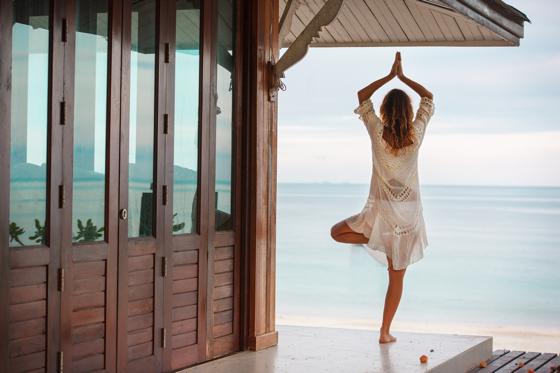It’s no secret that wellness is the key to a successful guest experience in the post-COVID landscape. As designers approach the layout of spaces, the best materials to integrate into guest rooms, and more, they must look at everything through the lens of health and wellbeing.
Contributed by Clay Markham, AIA, LEED AP, BD+C, senior vice president, practice area leader Hospitality, Americas and APAC, CallisonRTKL
The experts at CallisonRTKL have designated this new design perspective as “The Wellness Overlay.”
Shifting expectations for spaces
The Wellness Overlay will be an essential factor in the future design of hospitality properties and will be crucial as travelers choose where to spend their time. For example, the layouts we have come to expect from hotels will start to shift. Hospitality spaces, both public and private, will need to become flexible and adaptable, accommodate the challenges of today’s world at the drop of a hat, and be more prepared for future crises. Additionally, travelers – and hotel staff – are going to seek out safe, multifunctional spaces throughout their stay where they can touch down and congregate with friends, loved ones and colleagues.
As people continue to want to congregate outdoors for safety, even hotels located in colder climates will put a necessary emphasis on outdoor offerings and experiences. For the time being, spas will be a less critical amenity to the post-pandemic traveler, who we expect to prioritize fitness, nutrition and mindfulness offerings when they choose where to visit. Additionally, keeping with the trend of flexible, adaptable – and most importantly, safe – spaces, fire pits, overhead coverings, protected outdoor terraces with expansive views, and seamlessly implemented indoor/outdoor transitions will transform lobbies to restaurants and create other flexibilities. Furthermore, where once there was a focus on more open, social spaces, demand will now increase for more exclusive, private areas that only accommodate a few people at a time – offering both a feeling of wellbeing and an intimate experience worth traveling for.

On the back-end, a particular emphasis will be placed on the wellbeing of hospitality staff, and a way this can be achieved is through designing “well workspaces.” In other words, architects and designers will need to create hotel staff areas that are safe, routed properly, and multifunctional, encompassing all the qualities that employees have come to expect from the post-COVID workplace. Above all, these areas will be designed to put staff health and wellbeing first.
Materiality and airflow
Much like it overlays the atmosphere and layout of our spaces, so too does wellness affect the more minute details of hospitality design. Guests are more conscious than ever of where they lay their heads and hands, and especially what they see and perceive. With this in mind, properties must incorporate easily cleanable and antimicrobial surfaces and materials that feel good as well. Soft, natural elements that bring a sense of calm, combined with a biophilic approach that prioritizes health benefits and clean air, prioritize the feeling of wellness alongside current safety guidelines.
In that same vein, lighting and sound are tantamount to wellbeing. As these aspects overlay any experience we have, we will start to see wellness interjected into them. Hotels must focus on an abundance of natural and circadian lighting, injecting it into guestrooms, corridors, public spaces, parking areas – wherever possible for maximum guest access. Additionally, natural, uplifting sounds that bring a sense of the outdoors naturally uplift the spirit and organically provide a positive, relaxing experience for guests. Touching all of the senses positively will assure positive and memorable experiences.
As we move into the era of post-pandemic travel, air quality and airflow will be a high priority for travelers for the foreseeable future to avoid the possibility of future infection. While upgraded systems such as the HEPA filters we are used to seeing in hospitals are expensive, there are still strategic design solutions that architects and designers can implement to help create a safer indoor airflow for guests. These include the redesign of guestroom connect doors and a more significant number of air changes per hour in high-traffic public areas to ease guests.
As hospitality designers work together to develop these solutions, only time will tell if developers are willing to adopt and forget the costs of assurances like HEPA filters. These are the type of guest assurances that will ensure guests keep coming back.
Ultimately, hospitality properties must be less focused on programming and creating experiential spaces with wellness at their core, leaving guests with memories that exceed the expectations of even the pre-COVID world.
